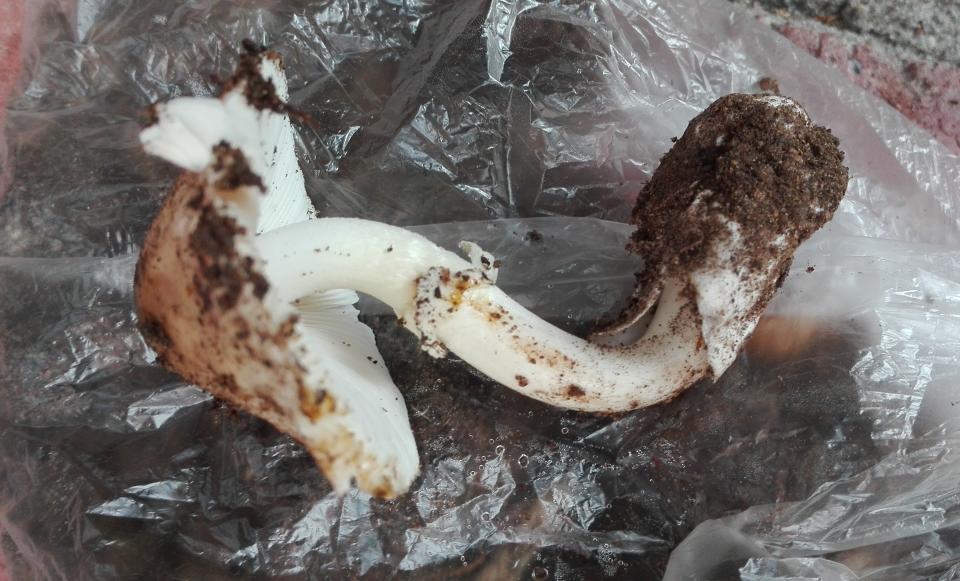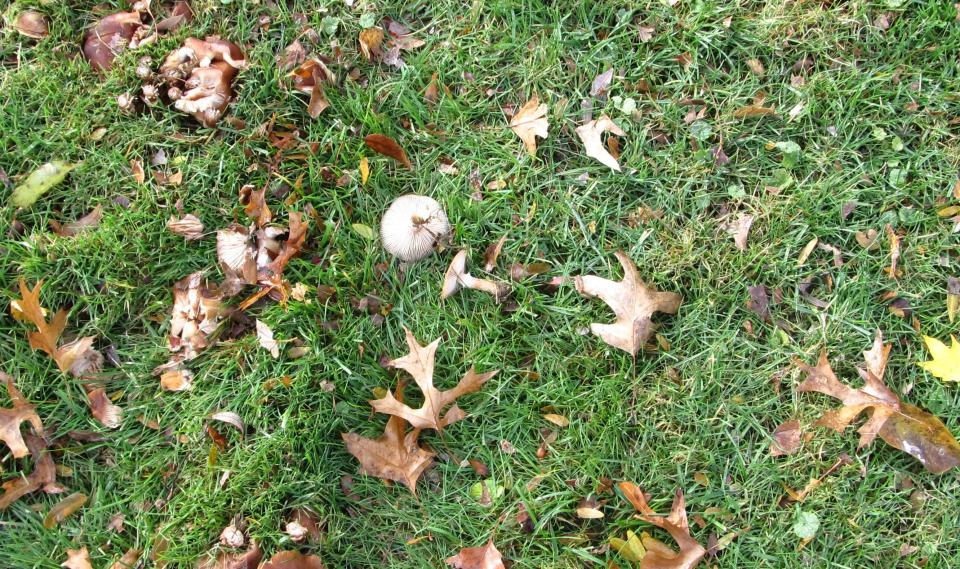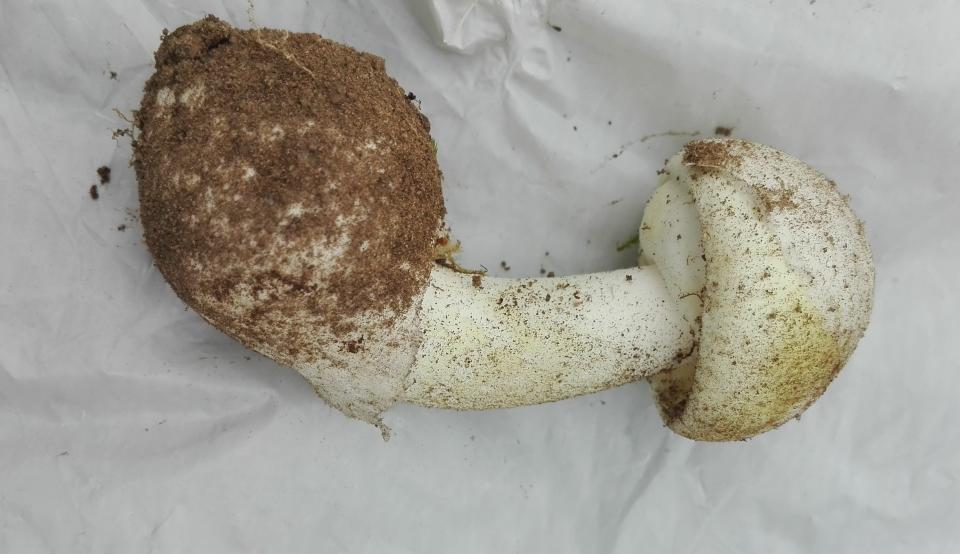A Stroll Through the Garden: Identifying and removing death cap mushrooms
A few years ago a reader sent me an email about identifying a mushroom in his lawn. These mushrooms were popping up in the lawn in clusters, just as I had in my yard a few weeks ago. The reader said there was originally a forest in his subdivision. If this forest was anything like mine, it would have had a number of oak trees. Oak trees are wonderful plants in many ways, but this mushroom is associated directly with this tree. Foraging for anything deserves caution.

Identifying the problem is the first step in the solution. When I look at this mushroom, I first see a white stalk with a large, round bulb at the base. It also has a little collar around the stalk that is somewhat ruffled. The top of the cap was about 3 inches on the more mature mushrooms and were a whitish color. I did not see any tree where the mushroom could have been attached, but they were all over the yard.
From the variety of maturity levels of the mushrooms I saw, almost egg-like in appearance, the younger mushrooms resembled a rounded umbrella. As the mushrooms matured, they looked more like an open umbrella and were smooth on the top of the cap. Gills were white under the cap, very crowded and terminated randomly. Spores under the cap were white. These mushrooms smelled like rose petals.
For myself, I feel fairly confident in saying that these mushrooms are death cap mushroom or Amanita phalloides. Thirty grams or 1 ounce is strong enough to kill a human in 48 hours if untreated. In 2006 a family of three from Poland died. Survivors normally require liver transplants.
Experts recommend that you don’t place other mushrooms in contact with this mushroom and don’t touch these killers with your bare hands. They can kill your dogs. Initial exposure to these mushrooms will cause the victim to vomit and have severe diarrhea. It is believed that death caps are the most poisonous mushroom on the planet. This sort of poisoning demands hospitalization quickly.

Removing this mushroom from your yard will be a challenge. Each cluster should be removed by hand as best as possible while wearing gloves. Each cluster of these mushrooms must be removed early before the little umbrella opens up. Mushrooms thrive in dense soil with shade and moisture. We can find them in lawns from spring to fall. Pesticides don’t work. From general knowledge, mushrooms do well in a poor soil, so normal nitrogen fertilizing discourages more mushrooms.
As I recall, the lawn of the people with the question generally looks fairly good. You are going to need to fertilize your lawn for a period of time or 1 pound per 1,000 square feet. I’ve also read that ½ ounce of iron sulfate per gallon per square yard also goes a long way in controlling mushrooms as well as aerating your lawn so that the environment for the mushroom is less than ideal. Also, mow your lawn as low as you can as the new clusters appear to help control the death caps. Don’t let any of the caps begin to show, otherwise you have just compounded the problem. Mowing caps and releasing their spores will extend control of the mushrooms even further.
The alternative is very dramatic. There is a source below the soil — how deep we don’t really know — but I can’t imagine it's more than a few feet. You would have to find each source and remove it to really get rid of the death cap. So, you need to dig with a fork or trowel and drill-out each source of the mushroom cluster.

For the best identification, I came across a display of accurately made ceramic mushrooms at Kingwood Center Gardens in Mansfield. I would recommend going to look at their collection and view the display. The folks at the Facebook group page — Mansfield Ohio Mushroom and Plant Enthusiast and Identification — have been helpful for many people. Mushroom Mountain in Ensley, South Carolina, is putting on a class in Virginia Aug. 12-13. Fungi Perfecti, owned by Paul Staments, has been in business since 1980 and is regarded as the best source of information on mushrooms.
Probably the most exciting way to learn about mushrooms can be found on News Day Cleveland with Don King, chef and wild food enthusiast. You should be able to find some of his videos on gathering some of these mushrooms and how to identify them. King may also take you on one of his walks.
Any questions you have about gardening please e-mail me at ericlarson546@yahoo.com. You can find links to my blogs at ohiohealthyfoodcooperative.org and leave your comments. I’ll do the best I can to help.
Eric Larson of Jeromesville is a veteran landscaper and gardening enthusiast and a founding board member of the Ohio Chapter of Association of Professional Landscape Designers.
This article originally appeared on Mansfield News Journal: How to identify and remove death cap mushrooms from your yard

